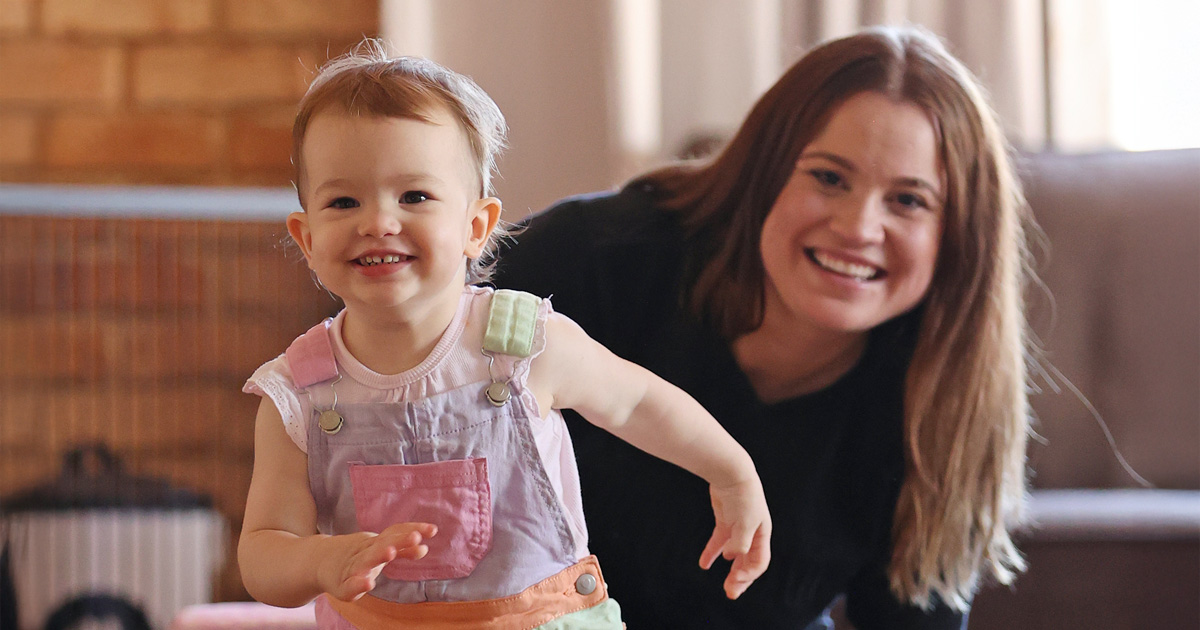Imagine you had a healthy daughter one day and the next being told she has an incurable condition that requires day-to-day care and insulin treatment to stay alive.
This is what happened to Kaitlyn Crouch and her husband, Justin Crouch. Their bright and spirited daughter Quinn was just 19-months-old when her parents took her to Perth Children’s Hospital emergency for an urgent insulin infusion.
Mrs Crouch’s nursing background proved vital for her daughter when she noticed Quinn had a thirst for water “she could not quench”. Recognising this as a symptom of diabetes, she went to her doctor, who ordered blood tests.
Two days later Mrs Crouch received a phone call to get her daughter to PCH urgently. That day she was diagnosed with type 1 diabetes.
The care Quinn now requires is 24 hours a day, seven days a week, 365 days a year, for the rest of her life. And while insulin provides a lifeline, it is not a cure.
But Kaitlyn counts their family as one of the lucky ones. Thanks to funding for the Children’s Diabetes Centre ‘Equitable Access from Diagnosis Study’, Quinn, and all other newly diagnosed WA children with T1D this year, have access to the best insulin delivery technology at no cost - from the beginning of their diabetes diagnosis.
“There is no good way for your child to become sick, especially with a condition as life changing as type 1 diabetes but by joining this program we’ve had the best experience, and so much support from the amazing team,” Mrs Crouch said.
“The technology has made our lives so much easier with a smoother transition into our new reality; if we were doing insulin injections, Quinn wouldn’t be back in day care, I wouldn’t be back at work.”
The hybrid closed-loop (HCL) system contains a blood glucose monitor known as a continuous glucose monitor communicating with an insulin pump to adjust insulin delivery in the background, putting an end to insulin injections which can be traumatic and challenging for young children.
While the glucose monitors are government-funded, the insulin pumps normally cost up to $10,000 every four years outright or are only available through the top private health cover, placing them out of many families’ reach until now.
Diabetes specialist Dr Kate Lomax, who is based in the Department of Endocrinology and Diabetes at Perth Children’s Hospital and at the Children’s Diabetes Centre at The Kids Research Institute Australia, is leading the project.
She hopes to prove a case for subsidising the devices, creating equity of care for all children with type 1 diabetes.
“There are many patients who struggle to access the best therapy, so the idea of the project was to reduce the barriers and increase the equity in terms of access to HCL systems for our families, from right at the beginning of diagnosis. We’re also trying to prove that is beneficial for them in the longer term,” she said.
“What happens to their anxiety levels, their sleep levels, their diabetes distress is what the project focuses on.”
“We’re following their outcomes for two years post- diagnosis to give a long-term picture. The point is to change and inform policy.”
“It’s a really tricky illness to manage, especially in little ones, so this is taking away so much of that burden and stress.”
Mrs Crouch said she hoped that one day the hybrid closed-loop system could be made available for everyone through the government, “this system really is the golden standard of treatment for diabetes.”

